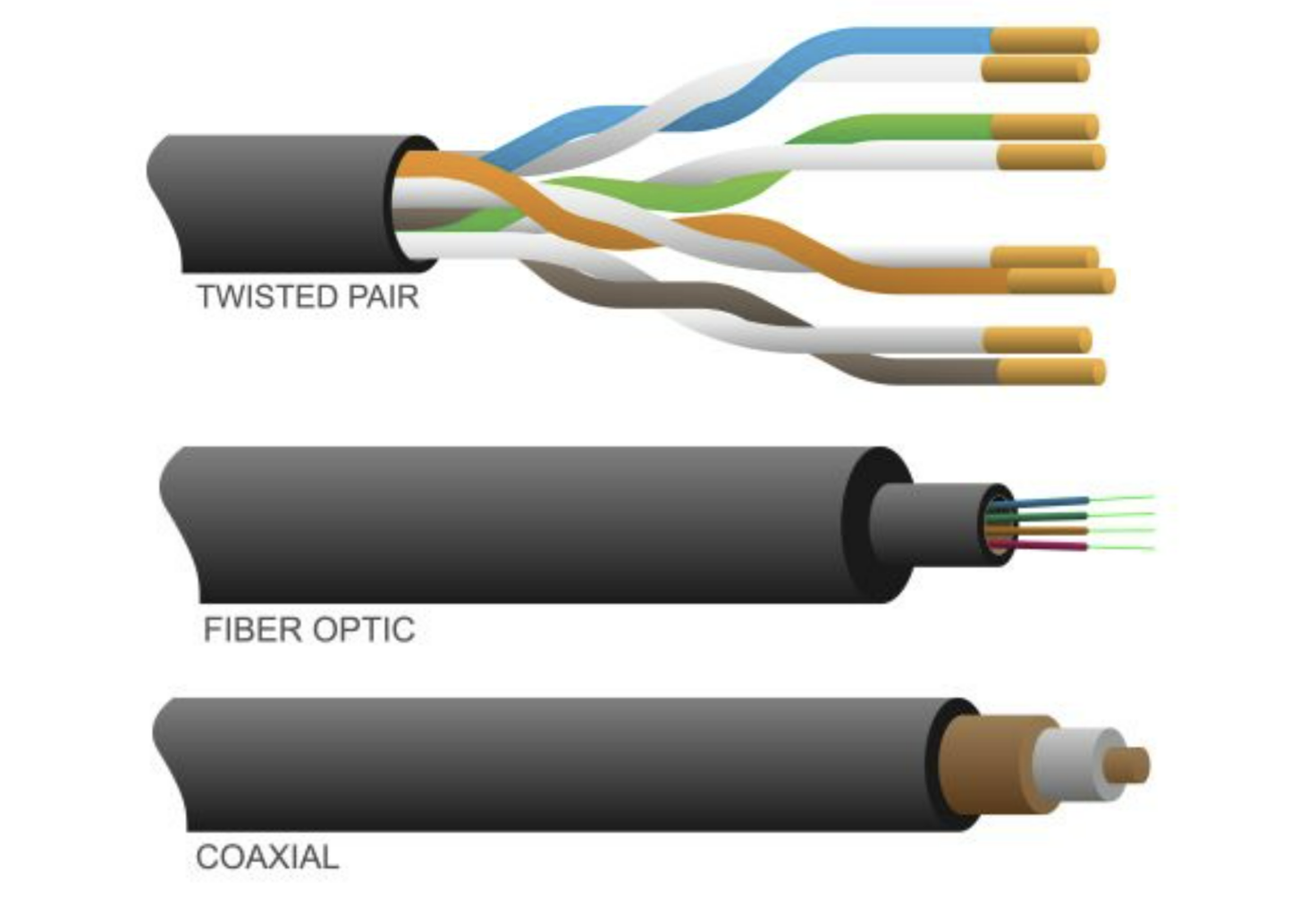Coaxial cables and fiber optic cables represent two of the most ubiquitous means of transmitting data and signals in contemporary telecommunications. Their respective designs and operational principles differ significantly, each with its unique strengths and applications. In this discourse, we will delve into the construction, functionality, and varied uses of coaxial and fiber optic cables, elucidating the advantages and drawbacks inherent in each type.
Coaxial Cable: Structure and Functionality
Coaxial cables, commonly termed coax cables, are comprised of an inner conductor surrounded by a concentric insulating layer, which is then enclosed by an outer conductive shielding. This construction imparts coaxial cables their name, as both the inner and outer conductors share a common geometric axis. The typical materials include copper for the inner conductor and aluminum or copper for the shielding, encased in a durable plastic sheath.
Functionally, coaxial cables are adept at carrying radio frequency (RF) signals. They are predominantly utilized in television distribution, broadband internet connections, and other high-frequency applications, owing to their capability of minimizing electromagnetic interference (EMI) and maintaining signal integrity over considerable distances. The cable’s design allows for efficient transmission of data with minimal loss, which is critical for high-bandwidth applications.
Types of Coaxial Cables
Coaxial cables can be categorized into several types based on their applications and construction specifications:
- RG-6: Commonly used for television signals and internet connections, RG-6 cables have a larger bandwidth and better shielding, which make them ideal for digital television and cable internet transmissions.
- RG-58: This type is frequently used in wireless communication and radio applications. Due to its smaller diameter, RG-58 is less suited for cable television but is suitable for short-distance applications.
- RG-59: Primarily used for closed-circuit television (CCTV) and other video applications, RG-59 offers less bandwidth than RG-6 but is still effective for shorter distances.
Understanding the specifications and optimal applications of each type is crucial for engineers and telecommunications professionals tasked with designing efficient networks.
Fiber Optic Cable: Structure and Functionality
In contrast, fiber optic cables utilize light to convey data, transmitting signals as pulses of light through glass or plastic fibers. The fundamental structure consists of a core surrounded by a cladding layer, both of which are encased in a protective outer sheath. The refractive index difference between the core and the cladding enables total internal reflection, thereby allowing light to propagate through the fibers with minimal loss.
This medium presents innumerable advantages over conventional electrical cabling. Fiber optic cables can transmit data over substantially greater distances without degradation, making them ideal for telecommunications, internet infrastructure, and data center applications. The capacity to carry vast amounts of data at astonishing velocities positions fiber optics as a keystone of modern communication technology.
Types of Fiber Optic Cables
Fiber optic cables are broadly classified into two categories:
- Single-mode Fiber (SMF): These cables possess a small core diameter (approximately 8 to 10 microns) and are engineered to carry light directly down the fiber with minimal modal dispersion. Single-mode fibers are primarily utilized in long-distance telecommunications and high-speed applications that necessitate extensive bandwidth, particularly in backbone network infrastructures.
- Multi-mode Fiber (MMF): With a larger core diameter (typically 50 or 62.5 microns), multi-mode fibers allow multiple light modes to propagate, suitable for shorter distances. These fibers are commonly employed in local area networks (LANs) and data centers where the transmission distance is limited.
Each type has its specific use cases dictated by distance, bandwidth, and cost considerations, necessitating a thorough understanding of the requirements to optimize design and function.
Comparative Analysis
The juxtaposition of coaxial cables and fiber optic cables elucidates several key differences:
- Transmission Medium: Coaxial cables transmit data through electric signals, while fiber optic cables employ light signals. This fundamental difference influences overall performance, with fiber optics generally providing superior bandwidth and distance capabilities.
- Bandwidth and Data Rate: Fiber optic cables can support significantly higher data rates than coaxial cables, accommodating the increasing demands of high-speed internet and video streaming services.
- Installation and Maintenance: Coaxial cables are more straightforward to install and maintain, primarily due to their robust nature. Conversely, fiber optics require careful handling and specialized skills for installation, as well as awareness of environmental factors affecting signal transmission.
- Cost Considerations: While fiber optic installations can be more expensive upfront due to material and labor costs, the long-term benefits—such as diminished signal loss and expanded capacity—often justify the investment.
Conclusion
As we examine the domains of coaxial and fiber optic cables, it becomes evident that both technologies have their respective niches and applications. Coaxial cables serve as reliable conduits for traditional data transmission in various environments, while fiber optic cables usher in a new era of performance across expanding digital landscapes. Understanding the nuances between these two types of cabling is essential for professionals engaged in telecommunications, ensuring optimal solutions for an ever-evolving digital world.












